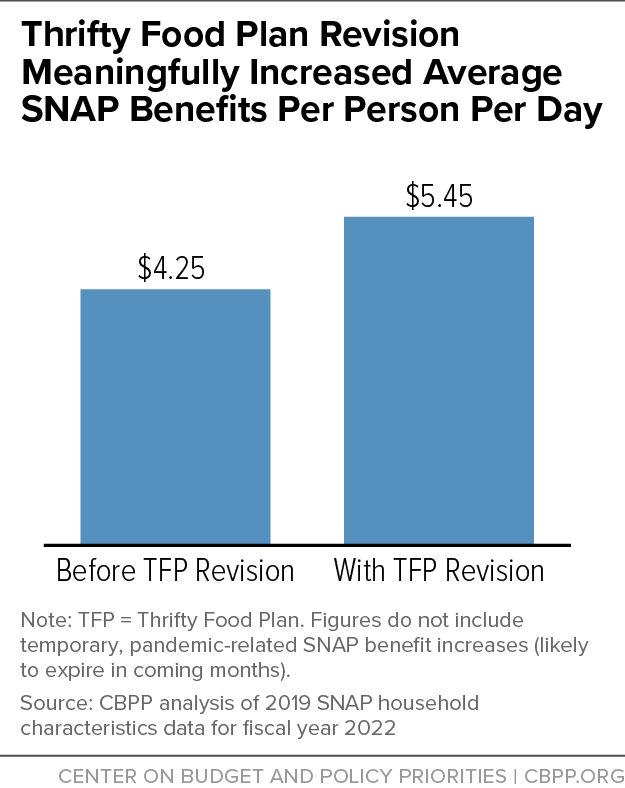BEYOND THE NUMBERS
Updated Thrifty Food Plan Helps Millions of Families Add More Healthy Foods to Their Diet
March is National Nutrition Month and a key emphasis of the Academy of Nutrition and Dietetics in 2022 is for people to eat a variety of nutritious foods. Families with low incomes are now better equipped to do just that, thanks to a recent congressionally directed update to the U.S. Department of Agriculture’s (USDA) Thrifty Food Plan, on which SNAP benefit levels are based.
One of three main dietary principles of the latest Dietary Guidelines for Americans is for people to “choose a variety of options from each food group” to help meet nutrient needs. Adding variety to one’s diet reduces the risk of consuming too little or too much of any given nutrient.
SNAP’s purpose is to help participants afford a variety of healthy foods. To help make good on that, Congress on a bipartisan basis directed USDA to increase the purchasing power of its Thrifty Food Plan (TFP), which it did effective October 2021 and for the first time in six decades. The results were a model diet that’s more: in sync with what families with low incomes eat, or would eat if less budget constrained; attuned to the realities of time-strapped families; and reflective of scientific evidence for a nutritious, varied diet that includes more whole grains, different-colored fruits and vegetables, and lean proteins (including seafood).
The new TFP resulted in a 21 percent increase in maximum SNAP benefits. These higher benefit levels will help households better afford a healthy diet featuring enough different fruit and vegetables, a recent study simulating the impact of the benefit increase found. And with fewer cost constraints on their food budgets, these households can better meet dietary guidelines for fruit and vegetable consumption while leaving more of their benefits to purchase other types of nutritious foods.
The SNAP benefit increase is modest but meaningful and will make a real difference for families who under the old plan would often run out of benefits before month’s end. As the chart shows, the 21 percent increase in maximum SNAP benefits raised the average benefit from about $4.25 per person per day to about $5.45 in fiscal year 2022. (This doesn’t include the temporary, pandemic-related increases that are now in place in many states but likely to expire in the coming months.)
One study found that an additional $1 per person per day in benefits (the new TFP provides $1.20) was associated with buying more nutritious foods. And we find the TFP increase will lift 2.4 million SNAP participants — including over 1 million children — above the poverty line and will improve food security and promote children’s health.
It's important to note that the updated TFP still assumes SNAP households will take significant steps to stretch their food budget by purchasing more nutritious but cheaper foods. Some households will still struggle to afford a healthy diet. That’s especially true for many households with high non-food expenses, those who live in higher-cost communities, and those with higher-cost food needs because of medical conditions or other reasons, and as food inflation erodes purchasing power.
And with emergency, pandemic-related SNAP allotments likely to end in the coming months, many households will experience a substantial cut in their SNAP benefits. Fortunately, because of the TFP increase, SNAP benefits will still be far more adequate than they otherwise would have been.

